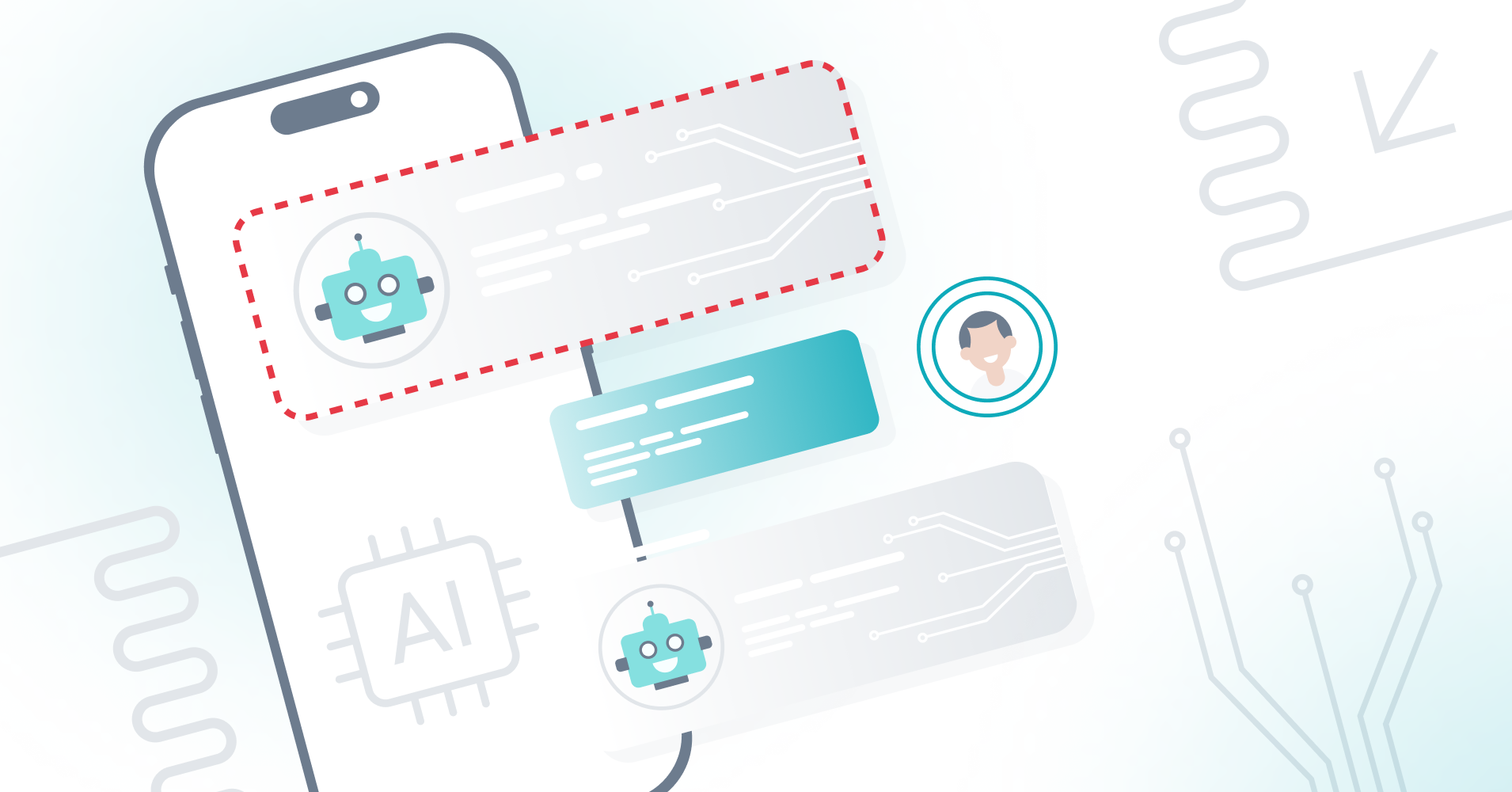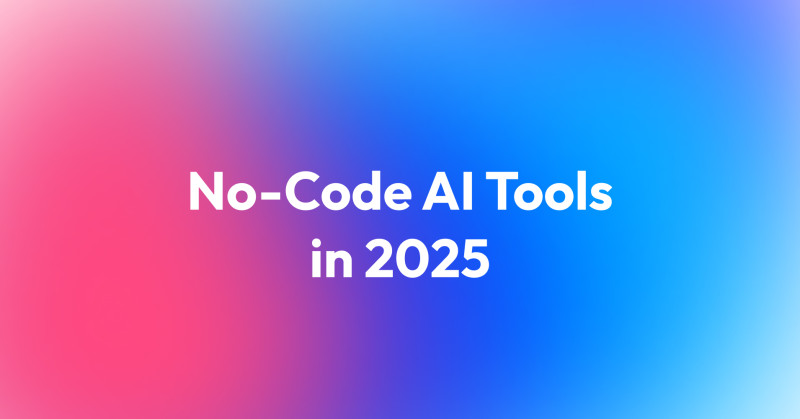Having an AI-powered assistant has become a natural part of our daily lives – from controlling home appliances and shopping to managing our finances. We adapted to them quickly because they use natural language, are intuitive to operate and support our daily tasks with remarkable accuracy.

But how exactly do they work, and how can we fully harness their potential?
What are AI Chatbots?
AI chatbots were made to simulate human conversation through text or speech. They are powered by artificial intelligence technologies, such as natural language processing (NLP) and machine learning (ML). These bots can understand and respond to user queries in a way that feels natural and engaging.
How AI Chatbot Work?
At the core of AI chatbots is the ability to understand and respond to human language. Using advanced technologies like Natural Language Processing (NLP) and machine learning, they can interpret questions, retrieve relevant information, and engage in meaningful conversations. Over time, these systems learn from interactions, becoming more efficient and accurate.
Let's break down the steps involved in how AI chatbots work:
Natural Language Understanding (NLU): The chatbot first processes the user's input, breaking it down into its constituent parts (words, phrases, etc.).
Intent Recognition: The chatbot then tries to determine the underlying intent behind the user's query. For example, if a user asks "What's the weather today?", the chatbot recognizes the intent to inquire about the current weather conditions.
Entity Extraction: The chatbot identifies specific entities within the query, such as "today" in the previous example.
Response Generation: Based on the identified intent and entities, the chatbot generates a suitable response. This might involve retrieving information from a database or following a predefined script.
Learning and Improvement: Over time, AI chatbots can learn from their interactions with users. By analyzing past conversations and user feedback, they can improve their responses and become more accurate and helpful.
How AI Chat Improve Customer Service?
Artificial intelligence can tremendously improve customer service. How?
24/7 Availability: AI chatbots can provide customer support around the clock, eliminating wait times and ensuring prompt responses.
Scalability: They can handle a large number of inquiries simultaneously, reducing the workload on human agents.
Consistency: AI chatbots can provide consistent information and responses, reducing the risk of errors or misunderstandings.
Personalization: By analyzing user data, chatbots can tailor their responses to individual preferences and needs.
Cost-Effectiveness: AI chatbots can help businesses reduce customer service costs by automating routine tasks.
Types of Chatbots
AI chatbots come in various forms, each designed to meet different business needs. They can range from simple, rule-based systems to more complex, adaptive solutions that leverage machine learning and natural language understanding. The choice of chatbot depends on the complexity of tasks, customer interaction requirements, and the level of automation desired.
Rule-Based Chatbots
These chatbots follow a predefined set of rules to respond to user queries. They are suitable for simple, repetitive tasks but may struggle with complex or unexpected questions.
Machine Learning Chatbots
These chatbots use machine learning algorithms to learn from their interactions with users. They can handle more complex queries and adapt to changing situations.
Hybrid Chatbots
These chatbots combine rule-based and machine learning approaches, offering a balance of efficiency and flexibility.
Voice Chatbots
Voice chatbots are a more advanced form of AI chatbots that can understand and respond to spoken language. They leverage speech recognition and text-to-speech technologies to enable natural, conversational interactions.
How Conversational AI Support Business?
AI chatbots are becoming increasingly sophisticated and are revolutionizing the way businesses interact with their customers. As technology continues to advance, we can expect to see even more innovative and effective chatbot applications in the future.
Improved Customer Service
24/7 Availability: Chatbots can provide customer support around the clock, eliminating wait times and ensuring prompt responses.
Quick and Efficient Responses: They can instantly answer common queries, reducing customer frustration.
Personalized Interactions: By analyzing customer data, chatbots can offer tailored recommendations and assistance.
Multilingual Support: Chatbots can communicate in multiple languages, expanding your reach to global markets.
Increased Sales and Revenue
Enhanced Customer Engagement: Chatbots can engage customers in interactive conversations, encouraging purchases and loyalty.
Lead Generation: They can qualify leads by collecting customer information and identifying potential buyers.
Upselling and Cross-Selling: By understanding customer preferences, chatbots can suggest additional products or services.
Personalized Recommendations: Based on customer behavior and purchase history, chatbots can provide relevant recommendations.
Operational Efficiency
Automation of Routine Tasks: Chatbots can handle repetitive tasks like answering FAQs, scheduling appointments, and processing orders.
Reduced Costs: By automating tasks, businesses can reduce operational costs and improve efficiency.
Data Collection and Analysis: Chatbots can gather valuable customer data, which can be used for market research and insights.
Enhanced Customer Experience
Seamless Interactions: Chatbots can provide a consistent and seamless customer experience across multiple channels.
Proactive Support: They can anticipate customer needs and offer assistance before a problem arises.
Personalized Recommendations: By understanding customer preferences, chatbots can provide tailored recommendations.
Read more: Implementation of Custom AI Chatbots
Examples of Business Applications
AI-powered chatbots have become essential tools for businesses across a range of industries. They provide seamless interactions, automate repetitive tasks, and significantly enhance customer service.
To understand how they help businesses, let's take a look at examples.
E-commerce: Providing product recommendations, handling returns, and answering customer inquiries.
Healthcare: Scheduling appointments, answering medical questions, and providing patient information.
Banking and Finance: Offering account information, assisting with transactions, and providing financial advice.
Customer Support: Answering FAQs, resolving issues, and providing technical support.
Limitations and Challenges of AI Chatbots
AI chatbots offer numerous benefits, but they are not without their limitations and challenges. As AI continues to evolve, businesses and developers must address several key issues to ensure chatbots provide effective, secure, and human-centric solutions.
Emotional Intelligence and Human-Like Interactions
One of the biggest challenges for AI chatbots is their inability to fully understand and respond to human emotions, sarcasm, or subtle social cues. While AI has advanced significantly in recognizing sentiment through text analysis (sentiment analysis), it still struggles with more nuanced emotional contexts, such as empathy, humor, or frustration. This limitation can make interactions with AI chatbots feel impersonal or even frustrating for users, especially in scenarios where human-like understanding is crucial.
Example: A customer seeking empathetic support after a failed product purchase may find the chatbot’s response robotic and unhelpful.
Challenge: Developing chatbots with improved emotional intelligence while balancing efficiency and cost remains a major focus of AI research.
Complex Queries and Problem-Solving Limitations
AI chatbots excel at handling simple, repetitive tasks, but they often falter when faced with complex, multifaceted inquiries. Chatbots are programmed based on predefined datasets and algorithms, limiting their ability to think critically or adapt to unexpected situations. When users ask ambiguous or intricate questions, chatbots may either provide irrelevant responses or fail to deliver satisfactory answers.
Example: A chatbot may struggle with understanding layered technical issues or legal queries that require nuanced responses.
Challenge: Improving the chatbot’s ability to understand context, multi-step problems, and ambiguity without overwhelming users with complexity.
Dependence on Training Data
AI chatbots rely heavily on the quality and diversity of the data they are trained on. If the dataset used to train the chatbot is incomplete or biased, the chatbot’s performance may reflect these issues. This can result in inaccurate responses, misinterpretations, or biased behavior, which can be particularly problematic when chatbots are used in sensitive areas such as healthcare or legal services.
Example: A chatbot trained on a limited dataset may only be familiar with Western cultural references, making it ineffective for users from different cultural backgrounds.
Challenge: Ensuring that AI chatbots are trained on diverse and comprehensive datasets to prevent bias and provide more inclusive solutions.
Concerns About Privacy and Data Security
AI chatbots collect and process vast amounts of user data, including sensitive information such as personal preferences, banking details, and medical history. This raises significant privacy and security concerns, especially if the chatbot interacts with multiple platforms or stores user data for future use. Ensuring compliance with regulations such as GDPR and preventing data breaches are essential considerations for chatbot developers.
Example: A security vulnerability in a chatbot system could expose customer data to cyberattacks or unauthorized access.
Challenge: Implementing robust security measures, including encryption, secure data storage, and regular auditing, to protect user information while maintaining chatbot efficiency.
Over-reliance and Reduction of Human Interaction
While AI chatbots can automate many tasks, over-reliance on them can lead to reduced human interaction, which might negatively impact customer experience. Users often prefer human assistance for more complex or emotionally charged issues. In some cases, companies that replace human customer service representatives entirely with chatbots may experience customer dissatisfaction, as customers may find it difficult to get personalized or empathetic help.
Example: A user trying to resolve a billing issue might prefer speaking to a human agent, but finds it difficult to navigate through a chatbot-only customer service system.
Challenge: Balancing automation and human intervention to ensure a seamless customer experience, especially in high-touch industries like healthcare and finance.
Maintenance and Continuous Learning
AI chatbots require ongoing maintenance and updates to remain effective. As language evolves and new trends, products, or services emerge, chatbots need to be continuously retrained and fine-tuned to keep up with user demands. Without regular updates, the chatbot’s ability to provide relevant responses may deteriorate over time.
Example: A chatbot that hasn't been updated to recognize new industry jargon or product features may offer outdated information.
Challenge: Ensuring that chatbots are regularly updated to keep pace with changing language and user needs, while maintaining operational efficiency.
Create Better Customer Experience with Generative AI
As AI chatbots continue to evolve, their potential to transform industries becomes even more apparent. With advancements in natural language processing, machine learning, and voice recognition, chatbots will only become more capable of handling complex tasks, offering personalized customer experiences, and integrating seamlessly into business operations.
In the future, we can expect AI chatbots to not only assist with routine inquiries but also act as proactive virtual assistants that anticipate user needs and enhance collaboration between humans and machines. The future of AI chatbots is bright, and their role in shaping how we live and work is just beginning.





















